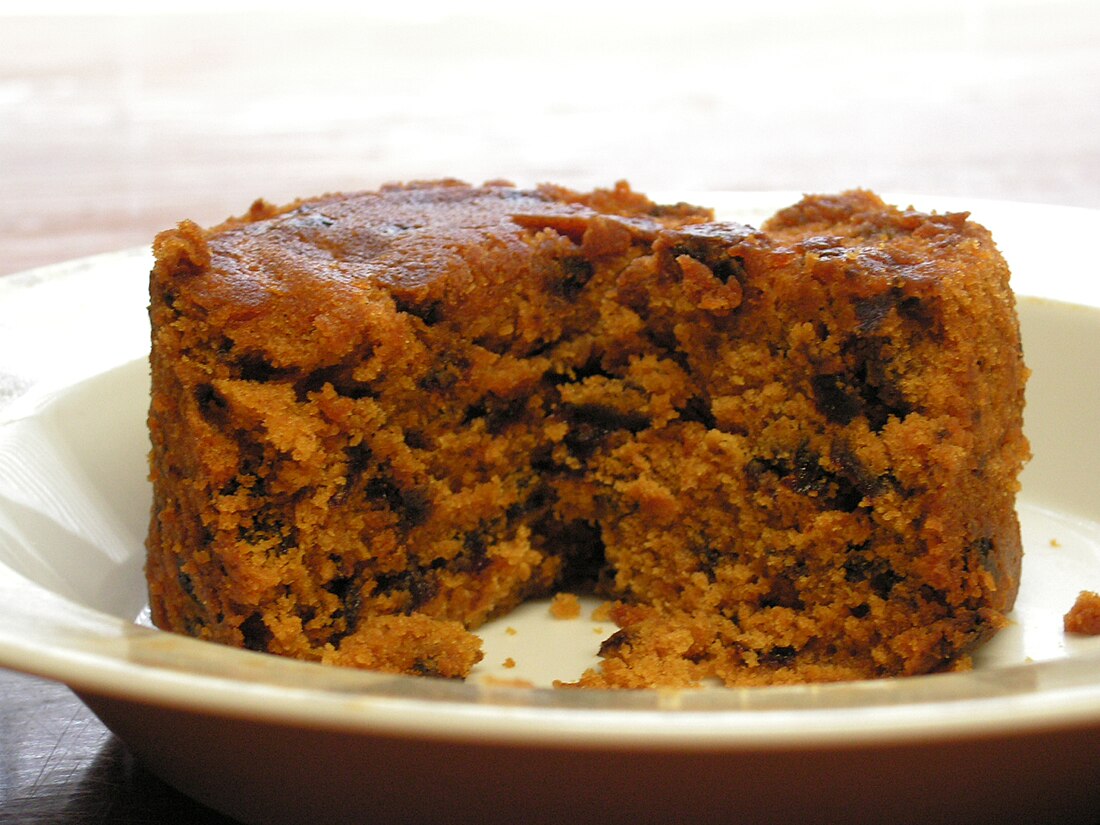Spotted dick
Dessert popular in the United Kingdom From Wikipedia, the free encyclopedia
Spotted dick is a traditional British steamed pudding, historically made with suet and dried fruit (usually currants or raisins) and often served with custard.
 | |
| Type | Pudding |
|---|---|
| Place of origin | United Kingdom |
| Main ingredients | Suet, dried fruit, flour, sugar, milk, baking powder |
Non-traditional variants include recipes that replace suet with other fats (such as butter), or that include eggs to make something similar to a sponge pudding or cake.[1]
Etymology
Spotted is a reference to the dried fruit in the pudding (which resembles spots).[2] The word dick refers to pudding. In late 19th century Huddersfield, for instance, a glossary of local terms stated: "Dick, plain pudding. If with treacle sauce, treacle dick."[3] This sense of dick may be related to the word dough.[4] In the variant name spotted dog, dog is a variant form of dough.[5]
History

The dish is first attested in Alexis Soyer's The Modern Housewife or, Ménagère, published in 1849,[6] in which he described a recipe for "Plum Bolster, or Spotted Dick – Roll out two pounds of paste [...] have some Smyrna raisins well washed".[7]
The name "spotted dog" first appeared in 1855, in C.M. Smith's "Working-men's Way in the World" where it was described as a "very marly species of plum-pudding". This name, along with "railway cake", is most common in Ireland where it is made more similar to a soda bread loaf with the addition of currants.[2]
The Pall Mall Gazette reported in 1892 that "the Kilburn Sisters [...] daily satisfied hundreds of dockers with soup and Spotted Dick".[3]
The name has long been a source of amusement and double entendres; reportedly restaurant staff in the Houses of Parliament decided to rename it "Spotted Richard" so it was "less likely to cause a stir".[8]
See also
- Clootie dumpling, a similar Scottish Traditional Pudding
- Figgy duff, a bag pudding from Newfoundland
- Poutchine au sac, Métis bag pudding from Western Canada
- List of fruit dishes
- List of steamed foods
References
Bibliography
External links
Wikiwand - on
Seamless Wikipedia browsing. On steroids.
